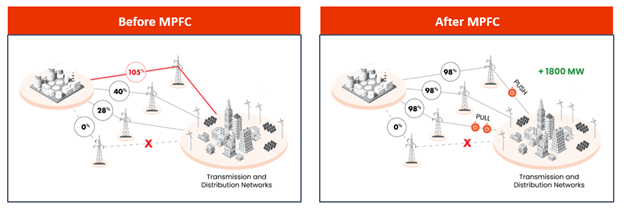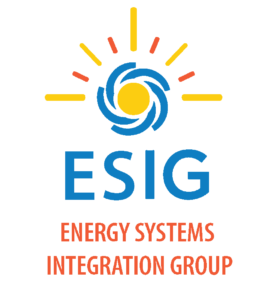How technology, policy, and leadership can leverage the grid to rapidly turn the curve on emissions reductions
The development of a widespread, reliable electricity grid has enabled a way of life that would have been unimaginable to previous generations. It is without question one of the all time, standout success stories for technology and engineering. In recent decades, the need for a sustainable clean energy system has been added to the requirements that electricity be reliable and affordable. And we have made remarkable progress in many areas against that challenge.
We have also been highly effective at developing long-term visions for a net-zero energy system. There has been much debate and investment in the policy and technologies that will enable us to achieve this in future decades.

Michael Walsh
However, there is a growing recognition that the world needs to accelerate progress toward decarbonisation. Actions taken in 2021 and 2022 that reduce emissions will be many times more impactful than the same actions taken five or ten years later. The importance and ability of near-term actions to “turn the curve” gets considerably less attention than the major achievements of the past 20 years or the excitement of 2050 visions. Yet the actions we take or do not take in the near term have the potential to define our success in achieving our collective objective of slowing climate change.
This is particularly true for us in the electricity grid sector where we have enjoyed major successes to date. But the International Energy Agency (IEA) 2020 World Energy Outlook has recently warned that “electricity grids could prove to be the weak link in the transformation of the power sector”. Given the value of fast action and the traditionally long time frame for infrastructure development and business processes, this area warrants urgent attention.
Here I examine some of the reasons that make this “turn the curve” phase so challenging and highlight some of the key success stories where technology, policy, and leadership have shown that faster progress is possible—through rapidly increasing the capacity of the grid to connect and transport additional renewable energy as well as policy and regulatory approaches that accelerate near-term improvements.
Reasons for Delay
There are many reasons that progress in short time frames is difficult in the grid sector. They include the many challenges associated with developing new grid infrastructure, and also a set of regulatory and business processes tailored for long-term, highly predictable, and slowly changing needs—when the challenge we face is near term, unpredictable, and rapidly changing.
In most countries, a $10 million grid project that has low physical impact, can pay for itself in under a year, and immediately reduces emissions will undergo the same assessment and approval process as a multi-billion dollar project that takes a decade to deliver. In fact, it’s even worse than that as the multi-billion project will be higher on the agenda for key decisionmakers and might even move faster.
It is also surprisingly common for a project to pass an initial assessment and then get added into the next grid planning cycle which could be more than five years away. The net effect of this is that projects that could make significant progress in reducing carbon in 2021 or 2022 will not be in place until many years later. This will generally add significant congestion costs to consumer bills while eating away at our very limited carbon budget.
Technology for Fast Grid Impact
There is a wide range of technologies that can radically increase the flexibility and capacity of the grid such as modular power flow control (MPFC) and dynamic line rating (DLR). These technologies offer a paradigm shift in grid planning and operation. Compared to steel and copper projects which are often delivered over the course of 10 years, today’s technologies built from silicon and software are available in a matter of months.
Modular power flow control can divert power away from congested paths and onto lines with spare capacity (see figure below). Recent examples in the UK and Germany have highlighted the substantial amount of capacity on the existing grid—often the capacity to meet the needs of a large city can be released in one year. Compared to traditional approaches to infrastructure investment, modular power flow control has been shown to have the potential to provide an annual reduction of 17 to 35 percent in annual redispatch costs and renewable curtailment, which equates to 6.8 to 14 TWh/year or 1.6 to 3.3 million metric tonnes of CO2 saved annually in Germany. This technology can be quickly installed within the existing network to unlock spare capacity—allowing significantly faster access for new renewable connections.

Before modular power flow control, unequal loading limits network utilisation and transfer capacity. By using modular power flow control to balance flows, transfer capacity is improved by 1800 MW.
Dynamic line rating can also be brought from concept to installation in under a year. This technology identifies in real time where there is additional capacity available on existing grids.
Compared to traditional approaches, modular power flow control and dynamic line rating can deliver new network capacity more rapidly, at a lower cost, and with less impact to communities and the environment. More information on a range of rapidly deliverable grid optimization technologies can be found in the WindEurope grid optimisation report.
Accelerating High-Impact, Near-Term Approaches
The existing business processes and regulatory models for investing in power grid typically move slowly, having been developed and fine-tuned for large-scale long-term actions. There are also frameworks for “innovation” in many countries but these tend to focus on small, low-impact demonstrations of early-stage technology. Neither approach is effective for enabling rapid roll out of solutions that can make a major contribution to decarbonisation in a matter of months.
There are a number of cases where policymakers and industry leaders have introduced frameworks that enable and reward approaches that are delivered quickly and have high impact. Examples include the Network Options Assessment process introduced in RIIO-T1 (Revenue = Incentives+Innovation+Outputs) by the UK regulator, Ofgem; the ad hoc process in Germany; and the network capability incentive parameter action plan (NCIPAP) process in Australia. All these processes encourage fast evaluation, approval, and delivery of projects that have a very fast payback period.
Regulators and policymakers across the world should roll out similar policies—if we can identify grid projects that can be delivered in less than one year, have a payback period of less than five years, and make a material impact on decarbonisation, we could meaningfully increase the momentum toward turning the curve in 2021 and 2022.
* * *
Transformational grid flexibility solutions exist today and can be rolled out at scale within months. There is a wonderful window of opportunity for leaders in the grid sector to accelerate the turning of the curve in carbon emissions and reduce the scale of the long-term challenge.
Michael Walsh
Chief Commercial Officer
Smart Wires

Leave a Reply